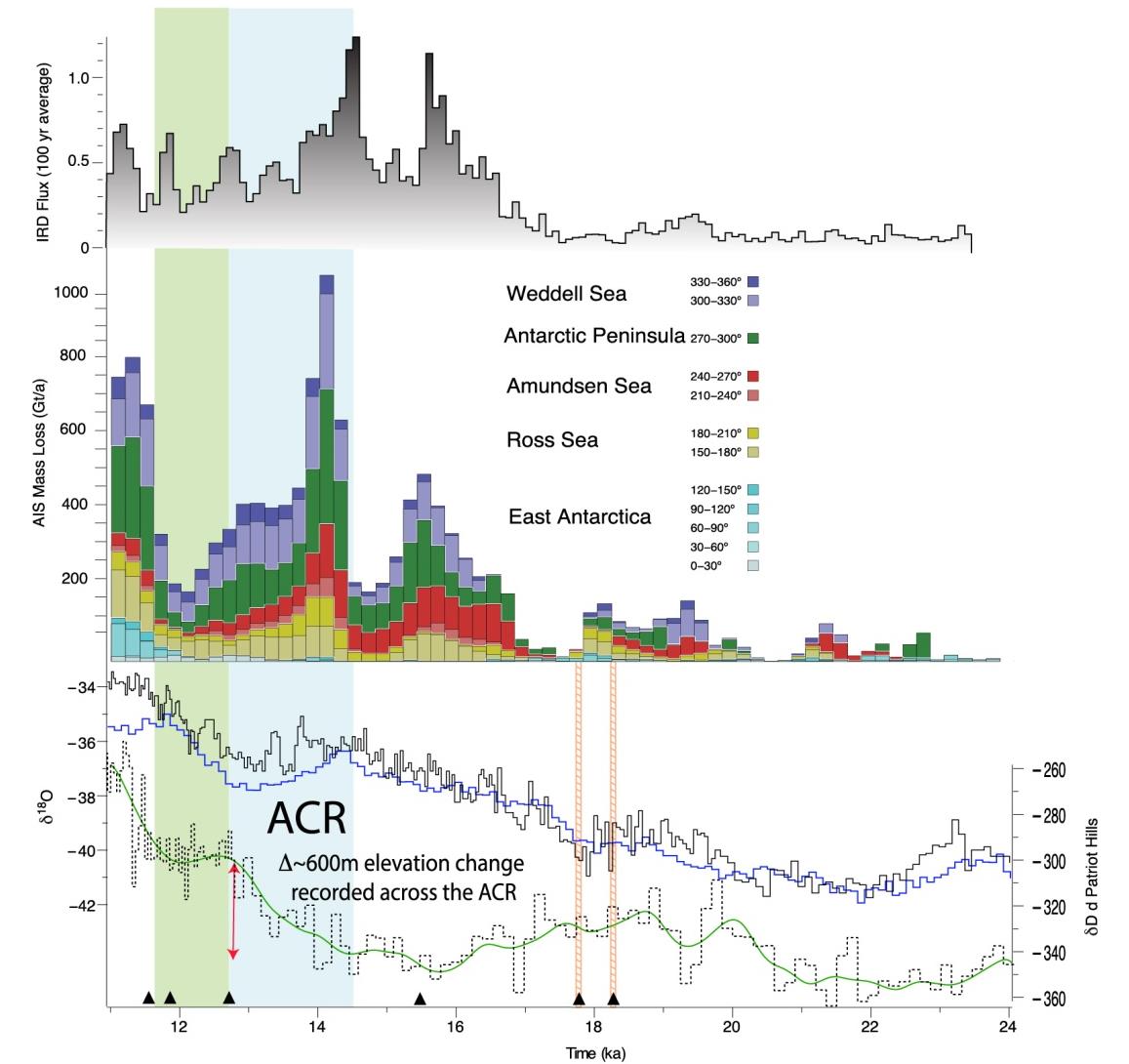A new ice core record provides clues on the evolution of the ice sheet in the Wedell sea during the last glacial termination which could improve the understanding of the ice-ocean-atmosphere feedback for climate change projection.
Scientific report by C.J. Fogwill, et al
Ice sheets dynamics is closely related to climate change and sea-level rise. Still, several mechanisms are involved in the ice-climate feedback, which are not accurately represented by global climate models so far. This hampers the predictions of the Antarctic ice sheet response to climate change in the future. In this study, Fogwill et al. present climate records obtained from an new, 800m long, ‘horizontal ice core’ in the Weddell Sea Embayment (Antarctica). The horizontal record is obtained in an ice stream, hence, going upstream enables to go back 50,000 years. The record covers the last glacial termination and thus enables the study of ice sheet dynamics during the largest climatic transition. During the last glacial termination, long-term warming is not monotonous and a 2 000 years long cooling occurred in Antarctica and in the Southern Ocean, known as the Antarctic Cold Reversal. Interestingly, during this period, the climatic record obtained in the Weddell Sea Embayment shows an important warming which denotes from other records across Antarctica. Here, the warming is associated with a local decrease in ice sheet elevation, and thus related to significant ice mass loss in the Weddell Sea Embayment. This observation is seconded by indices of a large number of icebergs in the area during the Antarctic Cold Reversal.

Fig 1: Inter-comparison of deglacial elevation changes from Patriot Hills blue ice area (in the Weddell Sea Embayment). Top: iceberg-rafted debris flux (IBRD) relative to the Holocene average from the Scotia Sea. Middle: modelled sector-wide Antarctic ice sheet mass loss. Bottom: Byrd (blue) and WAIS divide core (black) presenting the temperature variations across Antarctica, Patriot Hills isotope profile (black dashed line) and 2-point moving average (green solid line). The red arrow highlights the apparent ice sheet surface elevation change across the Weddell Sea Embayment using this record for the Antarctic Cold Reversal (ACR) period (blue shaded area). The black triangles are age tie points. This record, combined with marine geological evidence of enhanced iceberg calving and modelling of the ice sheet during the climatic transition provides the first direct evidence of the high sensitivity of the Antarctic ice sheet to global ice-ocean-atmosphere feedback while the Antarctic climate remained cold. The modelling approach even generalise the results to the entire Antarctic ice sheet margin and provide a better representation of the ice-ocean-atmosphere feedback to improve sea level projections.
Fogwill, C. et al. Antarctic ice sheet discharge driven by atmosphere-ocean feedbacks at the Last Glacial Termination. Scientific Reports 7 (2017)
Full article at : http://www.nature.com/articles/srep39979
MC


